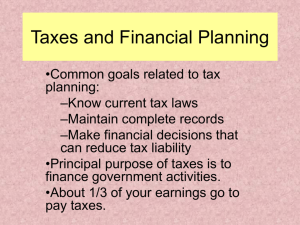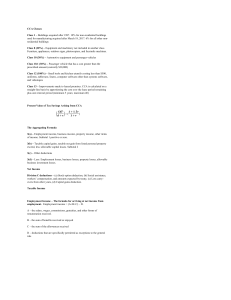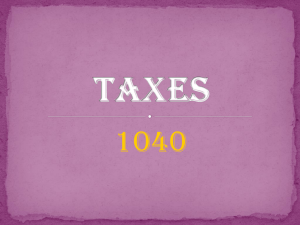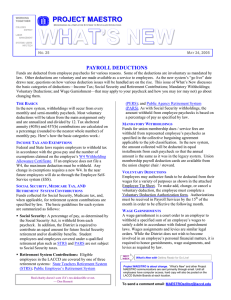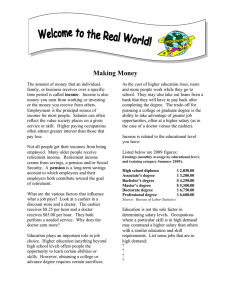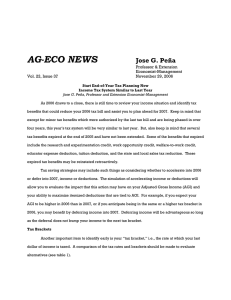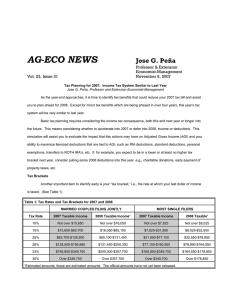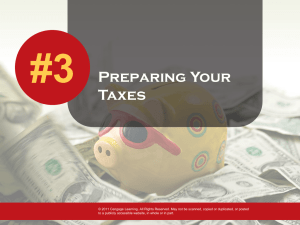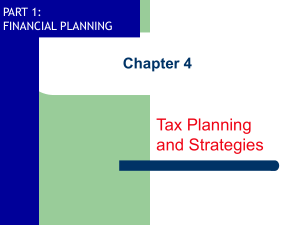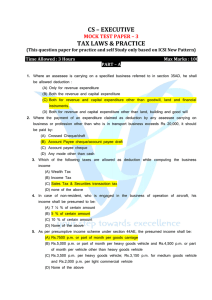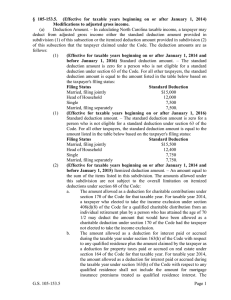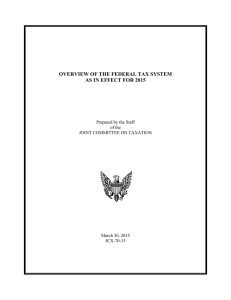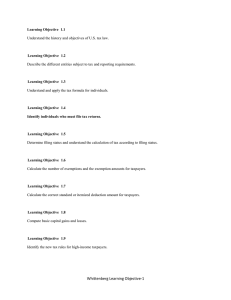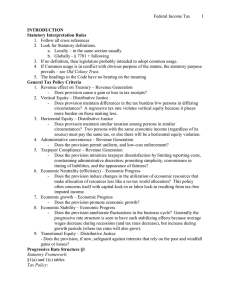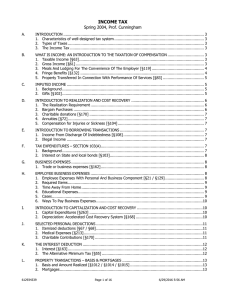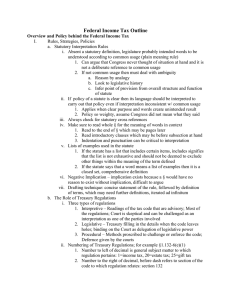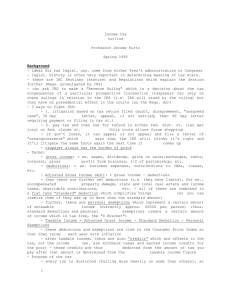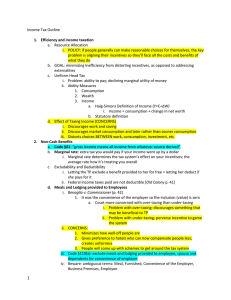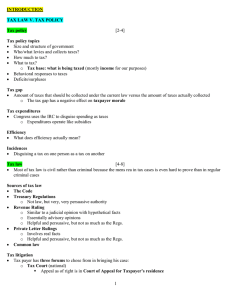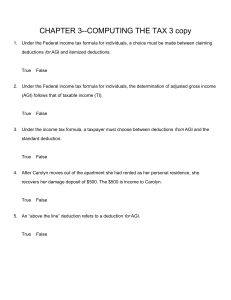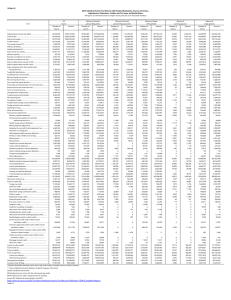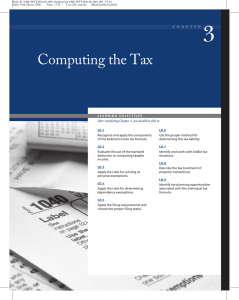Slides
advertisement
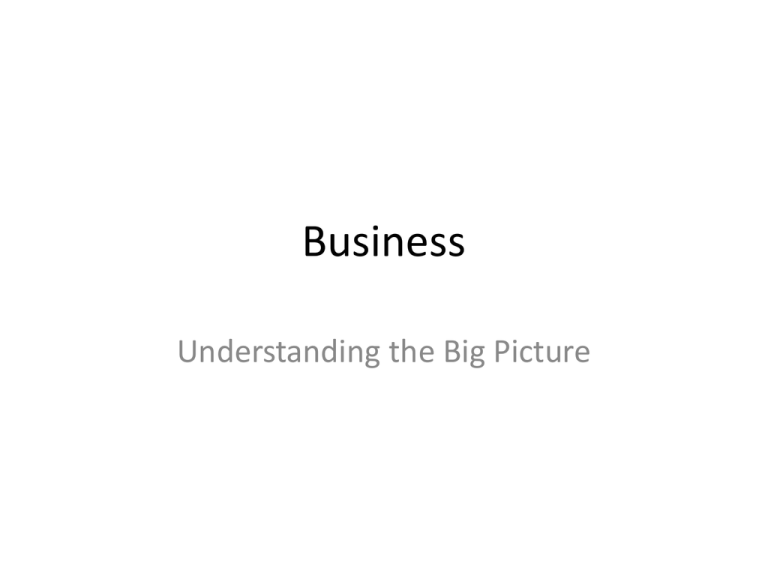
Business
Understanding the Big Picture
A Step Back
• What does it mean to have a job
– An organization is willing to pay you to help them
– They have to make money
– By hiring you, they are betting that you will
generate more revenue than your salary
A Step Back
• What does it mean to be an entrepreneur
– Start your own organization and generate your own
revenue
– You [and investors] are betting on yourself to generate
profit
– If you’re in it for the money
• You have to generate more profit/year than the salary you
turned down
– If you’re in it for the fun
• Go for it!
• Do it now
Every Organization Has to Make
Money
• Even non-profits and charities have to keep
the lights on
• As much as we’d rather just write code
– Someone has to make sure all the bills and
salaries are paid on time
How Organizations Make Money
• Hire a combination of employees with specific
skills and organize them towards a profitable
goal
• How expensive are employees?
The Employee
Employer Expenses
•
•
•
•
•
•
•
Salary
Social security 6.2%
Medicare 1.45%
Federal Unemployment $56
State Unemployment: Varies 2-10%
Workers Comp: Varies
Benefits: Varies
– Health Insurance
– Retirement
– Vacation
Employee Taxes
•
•
•
•
Social security 6.2%
Medicare 1.45%
Federal Income Tax
State Income Tax
– Varies by state
Federal Income Tax
• Tax brackets are widely misunderstood!
• No such thing as making a little more money
and paying a lot more in taxes
2014 Federal Income Tax - Single
• {Income : $89,300 , Federal Income Tax : $16,631}
• {Income : $89,400 , Federal Income Tax : $16,656}
Deductions
• The previous example was misleading
• After deductions, the taxable income of both
salaries were in the same bracket
• Itemized deductions
– Claim everything that is a tax deductible
– Complicates filing for taxes
– For most people, it will not save money
• Standard deduction
– The default deduction if you don’t itemize
– Filing single: $6200
• Taxable income is income minus deductions
Example Revised – Filing Single
• Income : $95,500
– Taxable Income after standard deduction: $89300
– Federal Tax: $18181
– Effective tax rate: 19%
• Income : $95,600
– Taxable Income after standard deduction: $89400
– Federal Tax: $18208
– Effective tax rate: 19%
Benefits
• Your salary is only the beginning
• Insurance (Health, Dental, Vision)
– Very expensive to purchase independently
• Vacation
• Profit-sharing and bonuses
– Take them if you can get them
• Stock Options
Benefits – 401K
• Most common employer sponsored retirement plan
• Set income aside and invest to earn interest
– Varying level of flexibility for investments
• Common for employer to match a % of contributions
• Pre-tax contributions
– Effectively an additional deduction on your taxable income
– Contributions + interest are taxed when withdrawn
– Similar to Tradition IRA
• Sometimes an option to use post-tax income
– No tax during retirement
– Similar to Roth IRA
• Penalties for withdrawing before retirement
Accounting
Accounting – The Big Three
• Income Statement
– Did the company make money?
• Balance Sheet
– What does the company own?
• Statement of Cash Flow
– How liquid is the company?
• The business world works in quarters
– Public corporations report to shareholders every 3
months
Accounting – Income Statement
• Revenue
– How much capital was generated
– Mostly through sales
• Expenses
– How capital much was used
• Income
– Income = Revenue – Expenses;
– The bottom line on the income statement
– What all investors are watching
– Usually translated into Earnings Per Share (EPS)
Microsoft Income Statement
(Abridged)
Accounting – Balance Sheet
• Assets
– Everything a company owns
– Includes cash, accounts receivable, properties,
equipment, investments, goodwill
• Liabilities
– Everything a company owes
– Includes debt, accounts payable, deferred tax, and
other financial obligations
• Equity
– Equity = Assets – Liabilities;
– The sheet must balance this equation
Apple Balance Sheet (Abridged)
Cash Flow
• A measure of liquidity (Flexibility)
– Cash is the most liquid asset
• Everyone wants it
– Non-cash assets make a company rigid
• Slower to adapt
• Susceptible to market changes
• Bottom line is the change in cash on hand
Facebook Cash Flow
Cash Flow Scenario
• A small startup has $100,000 cash
• Sells $1M in product that will cost $100,000 to produce
– $900,000 profit!
•
•
•
•
Revenue increases by $1M on the income statement
Accounts receivable increases by $1M on the balance sheet
Equity and Income look great: $900,000
Common to wait 90 days after delivery for a payment
– Cash flow looks bad in the short term: ($100,000)
• Startup must go an entire quarter with no cash
– Can’t fill any orders while waiting
– Taking orders during this time can cause a successful business to
fail
– Desperately look for new loans and investments
